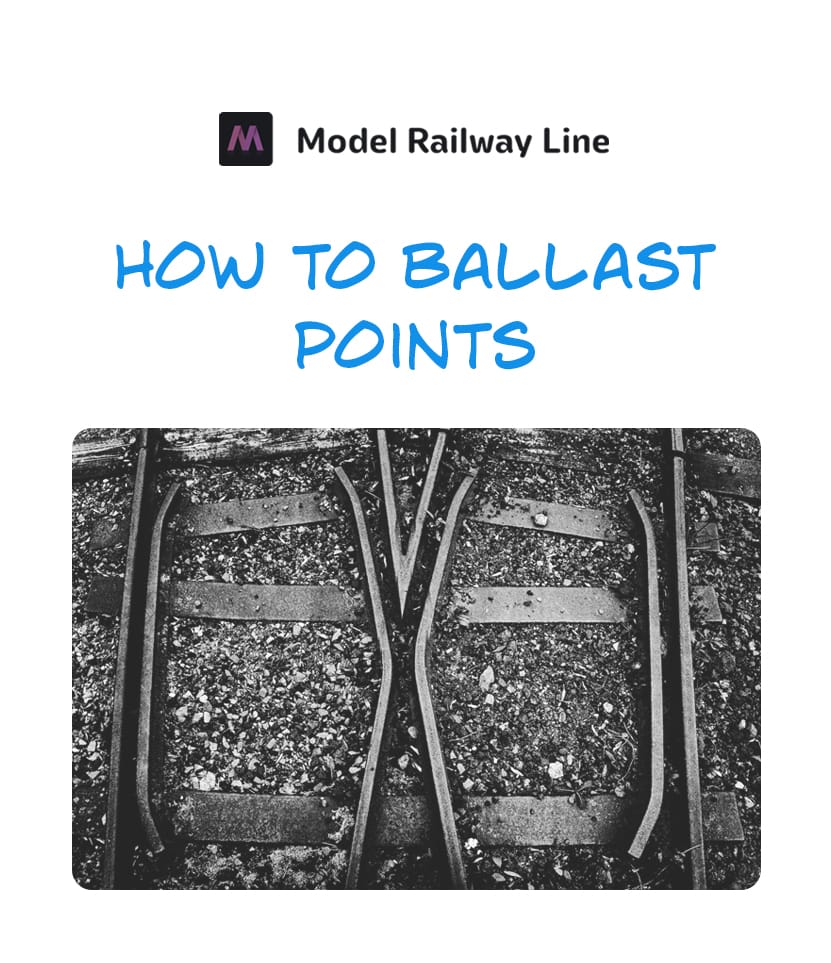How to Ballast Points in Easy Steps
Follow these simple steps and learn how to ballast points and switches easily on a model railroad or train set in order to get realistic tracks.

When you've laid down points or switches on a model train layout the next step that you'll want to take is to apply ballast in order to obtain realistic looking tracks.
Ballasting track on a model railroad is usually a straightforward process. However, when we ballast points it can often be a lot more complicated.
We have to be careful to avoid some common pitfalls to ensure that the points operate correctly and trains can run smoothly around the layout.
How does ballasting points differ from applying ballast to other sections of track? To find out how to ballast points easily we'll need to take a look at the basic process for ballasting model train tracks.
Ballasting track
Firstly, let's take a look at the most common method that model railroaders use to apply ballast to normal track. The simplified process goes like this:
- Sprinkle ballast onto the surface of the track
- Clear away any excess
- Spray a solution on top to hold the ballast in place (commonly a solution containing PVA, water and IPA)
- Apply an adhesive to secure the finish
- Tidy up
This is a reliable way of adding ballast to regular sections of track and gives consistent results.
However, the process for how to ballast points is slightly different due to a few considerations that we'll take a look at now.
How to ballast points
When ballasting points we have to do things a little differently due to the presence of moving parts and springs that are necessary for the points to operate correctly.
When we ballast points on a model train layout we need to use a more specialized technique to achieve the desired result.
If we were to simply use the same method as we do for normal track, then we run the risk of getting ballast stuck in the point components causing them to malfunction.
Therefore, ballasting points requires a more specialized approach.

Many railroad modellers consider the following method the safest and most suitable way to ballast points. It can be achieved using ballast, some basic PVA glue and a paintbrush.
How to apply ballast to points:
- Apply PVA glue to the gaps between the sleepers on the points
- Carefully sprinkle on ballast by hand, making sure to avoid any sensitive areas such as the point mechanism and springs
- Run your finger along the applied ballast to even out any imperfections and to smooth out the finish
- Regularly check that the point mechanism still operates correctly during this process
- Operate the points numerous times to allow any excess ballast to settle.
- Using a dry paintbrush, clear any ballast that's fallen outside the sleepers or is fouling the point work
- Repeat steps 5 and 6 until the ballast has fully settled.
- When finished, check that the points operate correctly
This technique has been specifically tailored to ensure reliable results when used on model train points.
The advantage of this method is that it's been proven to work with all the popular model train ballasts and brands including Busch, Javis and Woodland Scenics. It'll even work with certain homemade varieties too.
This makes the technique very versatile and enables points to be ballasted easily and consistently across numerous model railroad layouts, irrespective of the model train scale used.
The key with this method is to always regularly check that the points are operating correctly throughout. This will help prevent reliability issues later on.
Summary of point ballasting
When looking at how to ballast points it's important to take a different approach compared to ballasting normal track.
The process for applying ballast to points starts with applying PVA glue to the gaps between the sleepers, carefully sprinkling ballast on top by hand, smoothing out imperfections, and clearing any excess using a dry paintbrush.
When you've finished applying ballast to points it's important to always check that they are operating correctly to ensure the smooth operation of trains on your layout.
Once you've applied ballast to points you'll want to follow the best practice for building other model railroad scenery elements as well as following the recommended cleaning methods. For more information, see our model scenery guides for model railroads in addition to our maintenance and cleaning tips.

